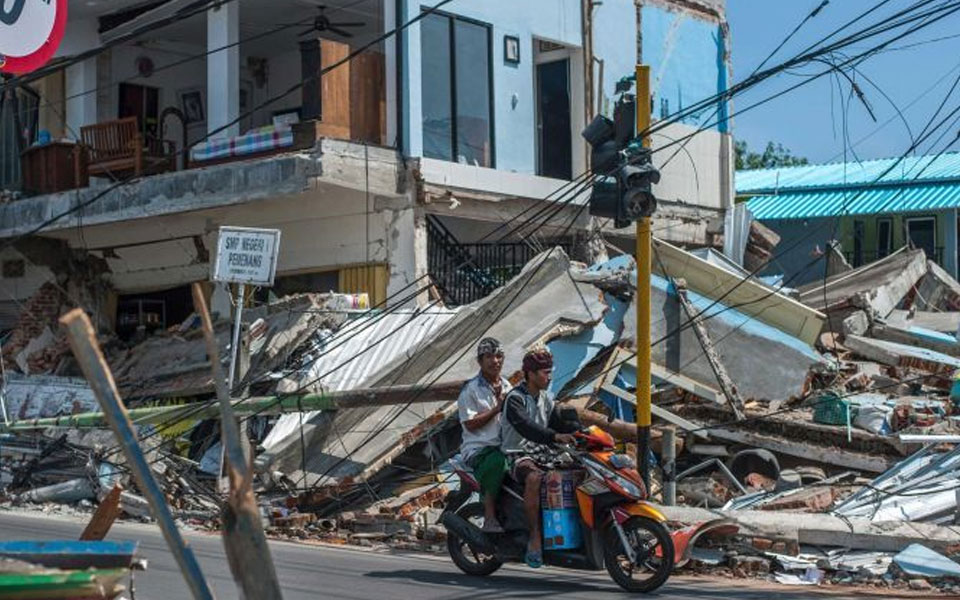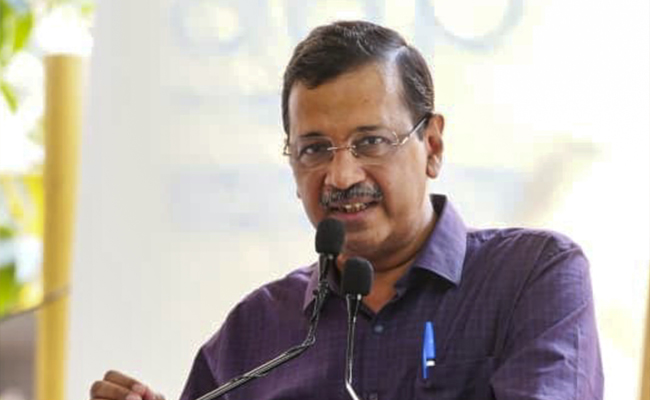Tanjung : Scientists say the powerful Indonesian earthquake that killed nearly 400 people lifted the island it struck by as much as 25 centimeters (10 inches).
The National Disaster Mitigation Agency said on Saturday that 387 people died, jumping from the 321 it reported the previous day, as search and rescue teams continued to sift through the rubble and people already buried by relatives are accounted for.
Using satellite images of Lombok from the days following the Aug. 5 quake, scientists from NASA and the California Institute of Technology’s joint rapid imaging project made a ground deformation map and measured changes in the island’s surface.
In the northwest of the island near the epicenter, the rupturing faultline lifted the earth by a quarter of a meter. In other places it dropped by 5-15 centimeters (2-6 inches).
NASA said satellite observations can help authorities respond to earthquakes and other natural or manmade disasters.
Almost 390,000 people, about 10 percent of Lombok’s population, are homeless or displaced after the earthquake, which damaged and destroyed about 68,000 homes.
Disaster agency spokesman Sutopo Purwo Nugroho said three districts in the north of Lombok still haven’t received any assistance. The governor of West Nusa Tenggara province, which includes Lombok, has extended the official emergency period by two weeks to Aug. 25.
“It’s estimated the death toll will continue to grow because there are still victims who are suspected of being buried by landslides and collapsed buildings and there are deaths that have not been recorded,” Nugroho said.
The number of evacuees fluctuates, he said, because not all evacuee points have been counted and some people tend to their gardens and properties during the day and return to the tent camps at night. Some people don’t need to evacuate because their homes aren’t damaged but have come to refugee centers because they feel traumatized.
Nearly a week since the 7.0 quake, Lombok is still reeling but glimmers of normality were returning for some and devout villagers are making plans for temporary replacements of mosques that were flattened.
In Tanjung, one of the worst affected districts in the hard-hit north of the island, a food market opened Saturday and locals bought vegetables and fish. Some shops also opened for business despite being in damaged buildings.
“I had to borrow money from someone to buy morning glory to be resold here,” said Natbudi, one of the market vendors. “If I just stay at the camp and don’t come here to sell then I don’t have money to buy rice.”
Lombok, a popular and less developed tourist destination than neighboring Bali, was hit by three strong quakes in little over a week and has endured more than 500 aftershocks.
A July 29 quake killed 16 people. An aftershock measuring magnitude 5.9 on Thursday caused panic, more damage and more than two dozen injuries.
Villager Sunarto, buying fish at the makeshift market, said it was a relief to do something ordinary.
“I feel happy and thank God that finally the market is open,” he said. “We can buy our needs while waiting for the situation to get back to normal even though we’re still worried.”
Indonesia is prone to earthquakes because of its location on the “Ring of Fire,” an arc of volcanoes and fault lines in the Pacific Basin. In December 2004, a massive magnitude 9.1 earthquake off Sumatra triggered a tsunami that killed 230,000 people in a dozen countries.
courtesy : hindustantimes.com
Let the Truth be known. If you read VB and like VB, please be a VB Supporter and Help us deliver the Truth to one and all.
Panaji (PTI): As part of a crackdown against tourist establishments violating laws and safety norms in the aftermath of the Arpora fire tragedy, Goa authorities on Saturday sealed a renowned club at Vagator and revoked the fire department NOC of another club.
Cafe CO2 Goa, located on a cliff overlooking the Arabian Sea at Vagator beach in North Goa, was sealed. The move came two days after Goya Club, also in Vagator, was shut down for alleged violations of rules.
Elsewhere, campaigning for local body polls, AAP leader Arvind Kejriwal said the fire incident at Birch by Romeo Lane nightclub at Arpora, which claimed 25 lives on December 6, happened because the BJP government in the state was corrupt.
An inspection of Cafe CO2 Goa by a state government-appointed team revealed that the establishment, with a seating capacity of 250, did not possess a no-objection certificate (NOC) of the Fire and Emergency Services Department. The club, which sits atop Ozrant Cliff, also did not have structural stability, the team found.
The Fire and Emergency Services on Saturday also revoked the NOC issued to Diaz Pool Club and Bar at Anjuna as the fire extinguishers installed in the establishment were found to be inadequate, said divisional fire officer Shripad Gawas.
A notice was issued to Nitin Wadhwa, the partner of the club, he said in the order.
Campaigning at Chimbel village near Panaji in support of his party's Zilla Panchayat election candidate, Aam Aadmi Party leader Kejriwal said the nightclub fire at Arpora happened because of the "corruption of the Pramod Sawant-led state government."
"Why this fire incident happened? I read in the newspapers that the nightclub had no occupancy certificate, no building licence, no excise licence, no construction licence or trade licence. The entire club was illegal but still it was going on," he said.
"How could it go on? Couldn't Pramod Sawant or anyone else see it? I was told that hafta (bribe) was being paid," the former Delhi chief minister said.
A person can not work without bribing officials in the coastal state, Kejriwal said, alleging that officers, MLAs and even ministers are accepting bribes.





